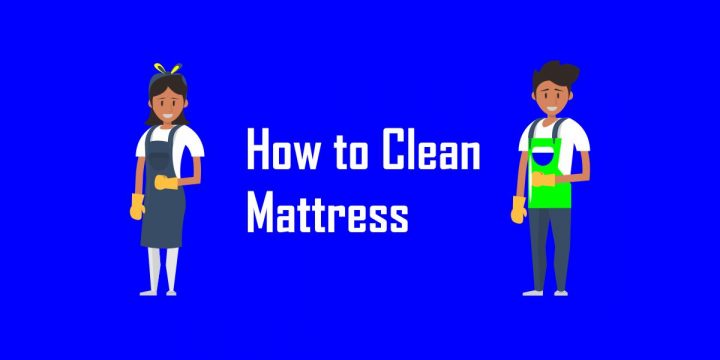
A good night’s sleep is essential for our well-being, and a clean mattress is crucial. Over time, mattresses accumulate dust, sweat, dead skin cells, and dust mites, making regular cleaning necessary.
In this article, we’ll show you how to clean a mattress thoroughly to maintain its hygiene and prolong its lifespan.
How to Clean a Mattress: A Comprehensive Guide
Regular cleaning helps remove allergens, dust mites, and stains, creating a fresh and resting place; here is a comprehensive guide on how to clean a mattress:
Materials Needed:
- A Vacuum Cleaner with Brush Attachment
- Mild Dish Soap
- Baking Soda
- White Vinegar
- Clean Cloth or Sponge
Instructions:
1. Remove all Bedding
This includes sheets, pillowcases, mattress pads, and any other coverings from the mattress, and wash it in hot water.
2. Vacuum the Mattress
Use a vacuum cleaner with a brush tool to clean the bed’s surface of dust, dirt, or other debris.
3. Sprinkle Baking Soda
Baking soda is a natural odor absorber that will help deodorize the mattress. Let the baking soda sit for at least 30 minutes or overnight.
4. Vacuum up the Baking Soda
Use the vacuum cleaner to remove the baking soda from the mattress.
5. Mix a solution of White Vinegar and Water
Use a ratio of 1 part vinegar to 2 parts water.
6. Apply the Vinegar Solution
Use a clean cloth or sponge to apply the solution to the stain. Blot the stain until it is gone.
7. Clean the Mattress
Mix a small amount of mild dish soap with water. Use a clean cloth or sponge to apply the solution to the bed. Blot the mattress until it is clean.
8. Let the Mattress Dry
This may take several hours or even overnight.
Also Read: How to Get Pee Out of a Mattress (Guide) 2023 Updated
Tips:
- You may need to use an enzyme cleaner if you have deep stains. Enzyme cleaners are designed to break down organic matter, which can help to remove tough stains.
- If you have a memory foam mattress, you must be careful not to wet it over. Memory foam mattresses can absorb a lot of water; if they are overwet, they may take a long time to dry.
- If you are cleaning a mattress in a hot climate, you may want to consider using a fan to help it dry faster.
Conclusion
A clean mattress ensures comfortable sleep and promotes a healthier living environment. Following the steps outlined in this guide, you can keep your bed fresh, hygienic, and in top condition for years to come.
Remember to clean your mattress regularly, address stains promptly, and use a mattress protector for added protection. A well-maintained bed will reward you with peaceful nights and better overall well-being.
Also Read: How to Clean a Tempurpedic Mattress? 8 Steps
FAQs
Can I use bleach to clean my mattress?
Using bleach on a mattress is not recommended, as it can damage the fabric and leave harmful residues.
Can I use a steam cleaner on my memory foam mattress?
Avoid using steam cleaners on memory foam mattresses, as the heat and moisture can damage the foam. Stick to vacuuming and spot cleaning.
How long does it take for a freshly cleaned mattress to dry?
The drying time depends on the cleaning method and weather conditions. Generally, it may take a few hours to a full day.
What should I do if my mattress has a musty smell?
Sprinkle baking soda over the mattress, let it sit, and vacuum it thoroughly. This should help eliminate the musty odor.
Also Read: How to Clean a Mattress Topper- Basic to Deep Clean Methods
